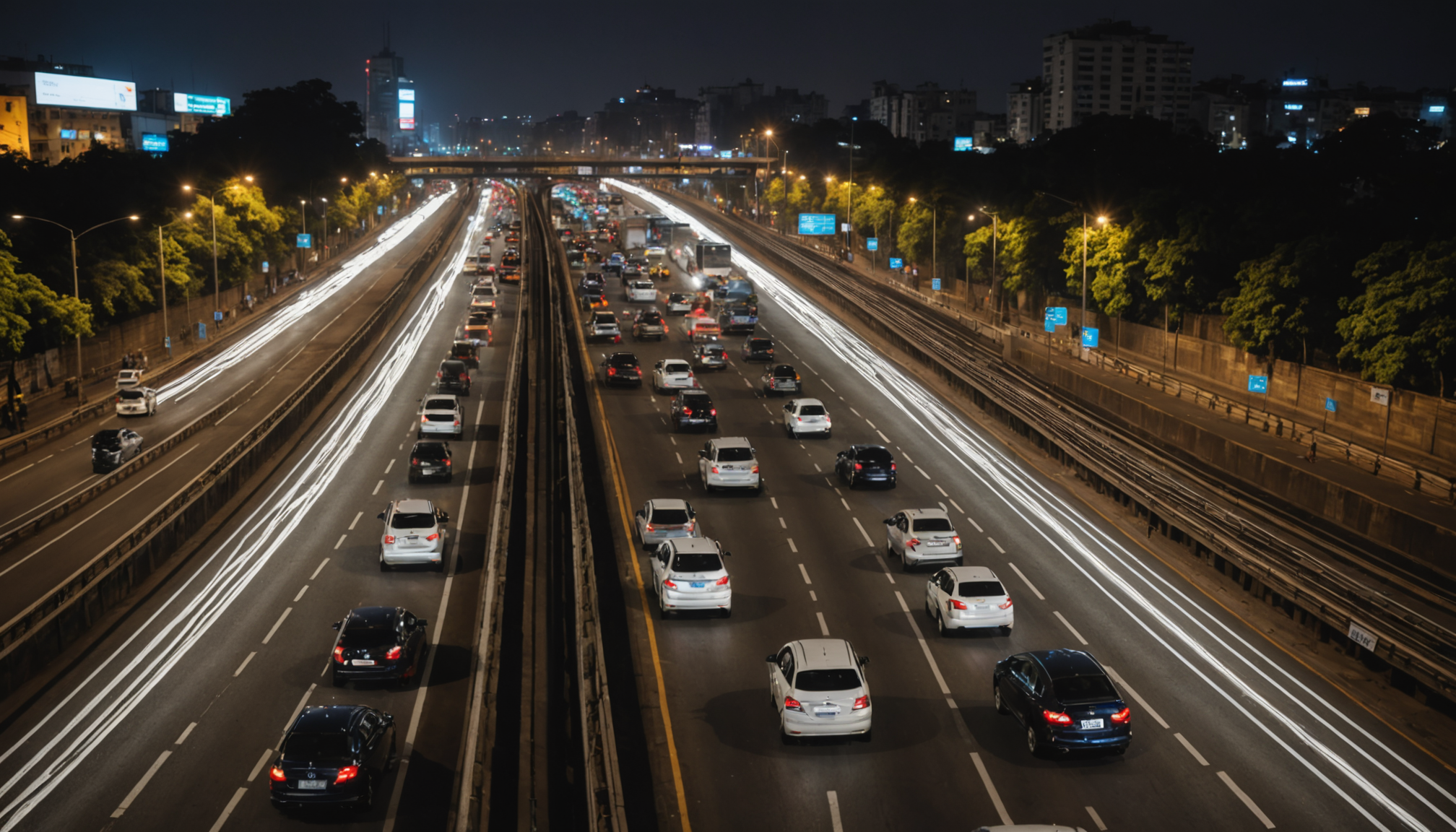
Four-Lane Underground Corridor Project Proposed to Ease Pune’s Traffic Congestion
Project Proposal and Key Stakeholders
On June 24, 2025, a significant infrastructure initiative was proposed to address the persistent traffic congestion in Pune’s central areas. The project involves constructing a four-lane underground corridor with two primary routes:
- Shaniwarwada (Kakasaheb Gadgil statue) to Swargate
- Sarasbaug to Shaniwarwada
MLA Hemant Rasane submitted the project proposal to Union Minister for Road Transport and Highways, Nitin Gadkari, during his visit to Pune. Maharashtra’s Higher and Technical Education Minister, Chandrakant Patil, was also present at the event.
Project Details and Financial Aspects
- The estimated cost of the project is approximately ₹550 crore.
- Each tunnel will be approximately 2.5 kilometers long and constructed about 30 feet below ground level.
- Funding is expected to be sourced jointly from the state government and the central government.
Objectives and Strategic Importance
The project aims to alleviate severe traffic congestion on two critical arteries of Pune city: Shivaji Road and Bajirao Road. These roads are surrounded by historical landmarks, religious sites, educational institutions, and major commercial markets, resulting in heavy daily vehicle movement.
Key objectives include:
- Enhancing traffic flow to reduce congestion and commute times.
- Preserving the city’s historical legacy by diverting traffic underground.
- Supporting future urban development plans by establishing a vital north-south link corridor.
Alignment with Sustainable Development Goals (SDGs)
This project contributes significantly to the achievement of multiple United Nations Sustainable Development Goals:
- SDG 9: Industry, Innovation, and Infrastructure – By developing resilient infrastructure and promoting sustainable industrialization through modern transport solutions.
- SDG 11: Sustainable Cities and Communities – By reducing urban traffic congestion, improving road safety, and preserving cultural heritage sites.
- SDG 13: Climate Action – By potentially lowering vehicular emissions through improved traffic management and reduced idling times.
- SDG 17: Partnerships for the Goals – Through collaboration between state and central governments to finance and implement the project.
Government Response and Next Steps
- Union Minister Nitin Gadkari expressed a positive response to the initiative and assured that a meeting with relevant department officials will be convened to discuss the project’s progression.
- Chief Minister Devendra Fadnavis has instructed the public works department to finalize the detailed project report, which is currently in its final stages.
- A funding proposal has been submitted to the state finance department, and central government support is being sought due to the project’s alignment with National Highway No. 4.
Conclusion
The proposed four-lane underground corridor project represents a strategic and sustainable approach to mitigating Pune’s traffic congestion challenges while supporting urban development and heritage conservation. The initiative exemplifies integrated planning aligned with the Sustainable Development Goals, fostering improved quality of life and sustainable urban mobility for Pune’s residents.
1. Sustainable Development Goals (SDGs) Addressed or Connected
- SDG 9: Industry, Innovation and Infrastructure
- The article discusses the proposal of a four-lane underground corridor project aimed at easing traffic congestion in Pune, which relates to building resilient infrastructure and promoting sustainable industrialization.
- SDG 11: Sustainable Cities and Communities
- The project aims to improve traffic flow and conserve the city’s historical legacy, addressing sustainable urban development and reducing the adverse environmental impact of cities.
- SDG 3: Good Health and Well-being
- By reducing traffic congestion, the project indirectly contributes to better air quality and reduced pollution, which are important for public health.
- SDG 17: Partnerships for the Goals
- The project involves collaboration between state and central government agencies, illustrating partnerships to achieve sustainable development.
2. Specific Targets Under Those SDGs Identified
- SDG 9 – Target 9.1: Develop quality, reliable, sustainable and resilient infrastructure, including regional and transborder infrastructure, to support economic development and human well-being.
- SDG 11 – Target 11.2: Provide access to safe, affordable, accessible and sustainable transport systems for all, improving road safety, notably by expanding public transport.
- SDG 11 – Target 11.4: Strengthen efforts to protect and safeguard the world’s cultural and natural heritage.
- SDG 3 – Target 3.9: Reduce the number of deaths and illnesses from hazardous chemicals and air, water and soil pollution and contamination.
- SDG 17 – Target 17.16: Enhance the global partnership for sustainable development, complemented by multi-stakeholder partnerships that mobilize and share knowledge, expertise, technology and financial resources.
3. Indicators Mentioned or Implied to Measure Progress
- Traffic Congestion Levels: Implied by the article’s focus on easing traffic congestion in critical city arteries (Shivaji Road and Bajirao Road), measuring vehicle flow and congestion reduction can serve as an indicator.
- Length and Construction of Infrastructure: The article mentions tunnels approximately 2.5 km long and 30 feet underground, which can be tracked as an indicator of infrastructure development progress.
- Funding and Project Implementation Status: The article references funding proposals and project reports, indicating financial and administrative milestones as indicators.
- Preservation of Historical Landmarks: The project’s aim to conserve the city’s historical legacy implies monitoring the condition and protection status of cultural heritage sites.
- Air Quality and Public Health Metrics: Although not explicitly mentioned, the reduction in traffic congestion implies potential improvements in air quality and health outcomes, which can be measured.
4. Table of SDGs, Targets and Indicators
| SDGs | Targets | Indicators |
|---|---|---|
| SDG 9: Industry, Innovation and Infrastructure | Target 9.1: Develop quality, reliable, sustainable and resilient infrastructure to support economic development and human well-being. |
|
| SDG 11: Sustainable Cities and Communities |
|
|
| SDG 3: Good Health and Well-being | Target 3.9: Reduce deaths and illnesses from pollution and contamination. |
|
| SDG 17: Partnerships for the Goals | Target 17.16: Enhance global partnership for sustainable development through multi-stakeholder partnerships. |
|
Source: hindustantimes.com







